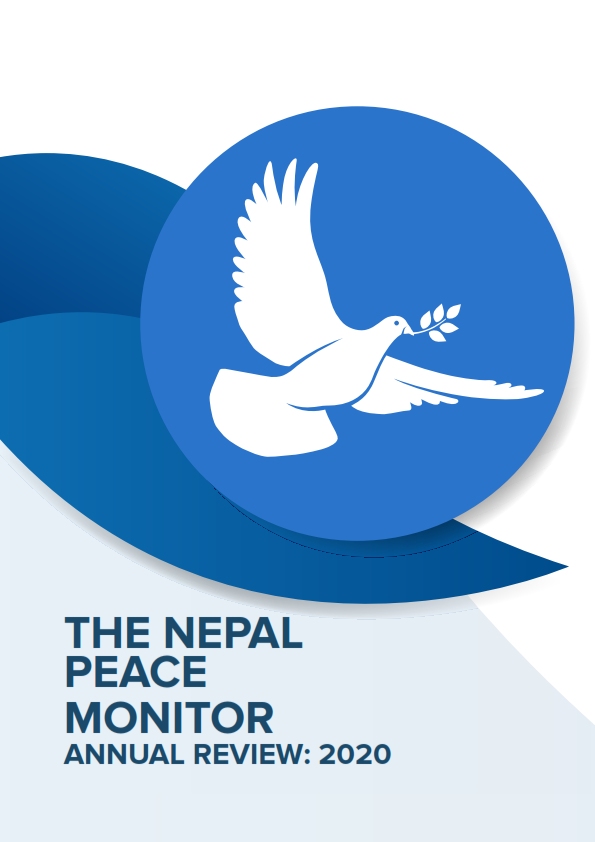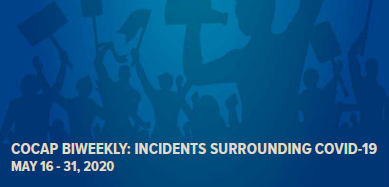Incident Reports
Still trapped - David Kainee's Op-ed on Human trafficking
2016-05-05
Human trafficking continues in the country despite decades of interventions from the state and non-state actors. The National Human Rights Commission (NHRC) reports that around 16,500 Nepalis have been trafficked from Nepal in last two years alone.
According to the report, most of the victims are women and children, especially young girls from rural areas. Human trafficking has been a long-time problem in the country and now with such alarming numbers, the government needs to take this issue more seriously. To make matters worse, trafficking became more rife after last year’s earthquake. The NHRC found 1,233 women and children missing within three months of the quake, which they suspect were trafficked, while 27 girls were jointly rescued by the Indian police and Nepal Embassy in New Delhi during the same time period.
Horrible business
Traffickers in Nepal are using different covers to operate their business and women and children are the easiest targets. According to the NHRC, there are 83 marriage bureaus in the country that are arranging marriages of Nepali girls with South Korean and Chinese nationals.
The NHRC asserts that between 2005 and 2013 at least 1,000 Nepali female migrants have reached South Korea as brides and most of them are forced to live like slaves. There have also been reports in the Nepali media about how girls are being trafficked from the county in the disguise of marriage. Instances have been reported where traffickers have lured women and girls with fake promises of good jobs in the Gulf countries but instead sent them to Nigeria to work in the adult entertainment business.
Even Nepali children are trafficked and sold in India. Some of these children are working in circuses whereas some work as domestic helpers. Most of the women and children who become prey to trafficking are physically and sexually exploited. It is disheartening to narrate their ordeals once they are sold.
Human traffickers take advantage of peoples’ miseries to continue their modern slave trade. Trafficking is endemic in Nepal mostly due to poverty and unemployment. Women seeking to escape poverty are lured by traffickers in the hope of economic gain. In Nepal, poverty is more prevalent among marginalised groups, so most of the women victims of trafficking belong to the lowest economic rung.
Human trafficking of women is also a result of patriarchy because an unequal power relation reinforces women’s secondary status in society. Many times family members are the ones selling them to traffickers for money. Recent reports released by the NHRC notes that 83 percent of women who were trafficked or were attempted to be trafficked were illiterate. Until we address these underlying causes of human trafficking, we cannot root out this evil from our society.
Inadequate progress
Even though anti-trafficking discourse and activities in Nepal have intensified after the restoration of multi-party democracy in 1990 and have allowed NGOs and community-based organisations to expand their clout, substantial progress against trafficking has not been achieved yet. There are many obstacles in this regard. One of the major legal obstacles in favour of the traffickers is the open border between Nepal and India. Traffickers can easily transport victims across the Indian border.
Although designed to facilitate trade and transit, the open border enables traffickers to cross over to the other side easily. Even if security is beefed up at the border points, there are thousands of other informal paths to enter India.
Another factor responsible for increased trafficking in the country is the government’s failure to implement and enforce anti-human trafficking measures. The government of Nepal has not even invested much to fight human trafficking and has instead been depending mostly on donors. Anti-trafficking policies are poorly integrated with other social initiatives. As human trafficking is a result of poverty and unemployment, better coordination between the concerned line ministries dealing with infrastructure development, community development, employment generation, and poverty alleviation is necessary to combat the scourge.
Collision between politicians and traffickers is another challenge. There is a lack of political will among politicians to fight trafficking as they themselves are involved in corruption. Even convicted traffickers are moving freely due to patronage from politicians. Therefore, to curb trafficking in the country, the government and non-government actors need to work in unison. For Nepal, collaboration with the Indian government is also equally important. Human trafficking is one of the worst crimes and the government needs to do more to tackle it.
Kainee is associated with Global Hope Network International
Related Reports
Human Trafficking / Kabhrepalanchok
29-year-old man arrested on the charge of human trafficking
Bagmati, Kabhrepalanchok, Banepa, Ward 8
May 22, 2023
Human Trafficking / Kabhrepalanchok
Two arrested on the charge of human trafficking in Kavrepalanchok
Bagmati, Kabhrepalanchok, Banepa
May 22, 2023
Human Trafficking / Dhading
Complaint lodged against a woman arrested on the charge of human trafficking in Dhading
May 14, 2023
GBV / Rautahat
Seven arrested on the charge of operating sex-trafficking hotel in Rautahat
May 03, 2023
GBV / Lalitpur
14-year-old teen boy arrested on the charge of raping a 5-year-old girl in Lalitpur; Accused's father arrested on the charge of trafficking the victim to India
April 28, 2023
Related Trend Analysis
Analysis

THE NEPAL PEACE MONITOR ANNUAL REVIEW: 2020
October 25, 2021
Human Trafficking / LGBT+ Rights / GBV / Political / Children’s Rights / Senior Citizens’ Rights / HRD Issues / Human Rights / Interpersonal Violence / Governance / Covid-19 / Civic-Space / PwD


